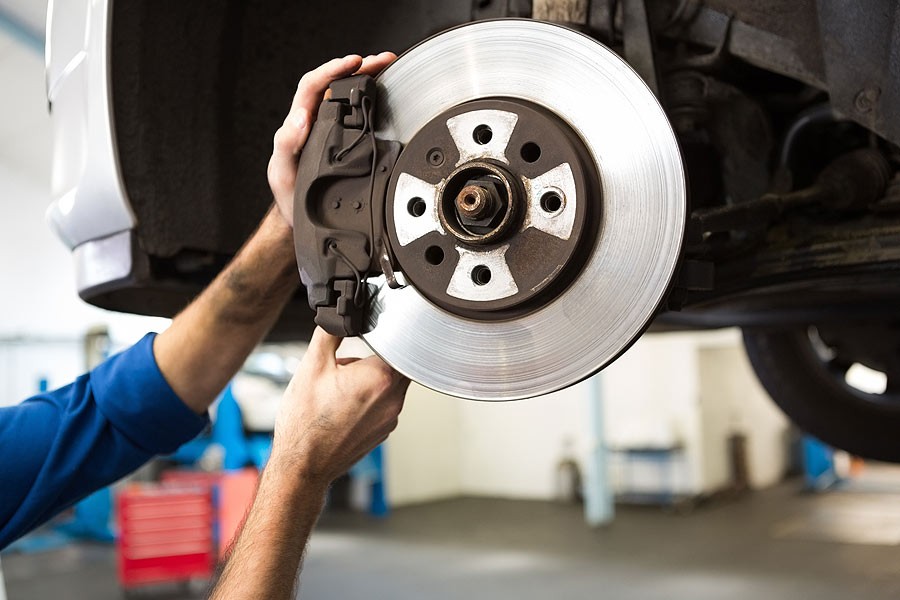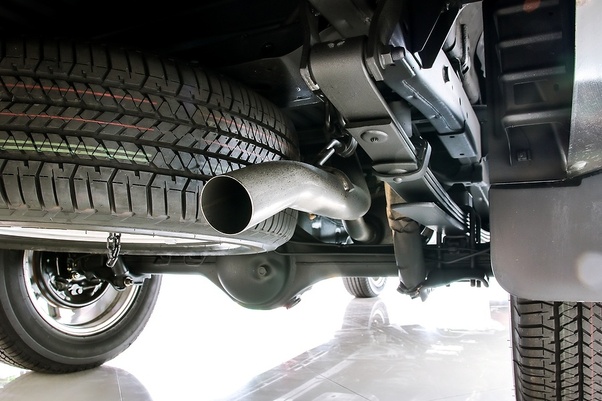the introduction:
Car brakes are considered one of the main elements of the traffic safety system, as they play a crucial role in ensuring a safe trip
For the driver and passengers. Brakes convert the vehicle's dynamic motion into thermal energy, which significantly reduces its speed
Cavio thus gives the driver full control of the vehicle. In this article, we will explore the different types of brakes
And how it works, with a focus on the vital role it plays in ensuring our safety on the roads.
Types of brakes in cars
There are several types of brake systems in cars, the main types include:
1. Hydraulic brake system: relies on hydraulic fluid to transfer force from the brake pedal to the parts
Brakes.
2. Traditional (disc) brake system: It uses rotating discs that operate when the brake pedal is pressed.
3. Traditional brake system (drum): It relies on shoes inside a rotating drum, and pressure is applied to achieve stopping.
Prevents slippage during hard braking, which helps maintain control (ABS): 4. Anti-skid system
The vehicle.
It automatically distributes braking force between the front and rear wheels based on: (EBD) 5. Equilibrium Braking System
Payload.
6. Auto Hold Brake System: Automatically keeps the brakes applied while the vehicle is in use.
Parked without having to constantly press the brake pedal.
It is used in trucks and buses, and relies on an electronic control system (EBS): 7. Emergency braking system
Brakes.
These systems differ in design and technology, and are used depending on the model and technical configuration of the car.
Signs of failure in the brake system
There are several signs that could indicate a brake system failure, including:
A whistling or squealing brake sound: This may indicate wear on the brakes or a problem with the discs or drivetrain. ●
Feeling tremors while stopping: This could be caused by worn discs or wheels, or uneven brakes. ●
● Delay in stopping: If the distance the vehicle needs to stop increases, this may be an indication of problems in the system
Brakes.
Reduced pedal height: If the brake pedal feels low or is unstable, this may indicate ●
Leakage in the hydraulic system.
Vibration or wear in the pedal: This may indicate problems with the pipes or cylinders. ●
Musty smell: A musty smell when using the brakes may indicate a problem with the brakes, such as a fluid leak. ●
Fluid Leak: Fluid leaking from the brake system can indicate problems with the pipes or cylinders. ●
Brake warning sign on the dashboard: If this sign appears, the brakes should be checked immediately, as it may indicate...
To a problem in the brake system.
If any of these signs appear, it is recommended to inspect the brake system and perform the necessary maintenance to ensure driver safety
Brake system malfunctions
Some common problems that a car's brake system may encounter include:
Brake wear: As a result of frequent use, wear can occur in the brake discs and calipers, leading to ●
Loss of brake effectiveness.
Cracked discs: This may occur as a result of excessive heat or corrosion, which affects the brakes’ ability to perform. ●
Fluid leakage: Fluid leakage from the brake system can occur as a result of damage to the pipes or cylinders.
Low brake fluid level: It can occur as a result of fluid leakage or corrosion in the brake system. ●
Damage to safari shoes: It can occur as a result of heavy use, leading to a loss of braking effectiveness. ●
Sub-cylinder problems: Wear of seals or cylinders may cause performance problems. ●
● A malfunction in the ABS system: It may affect the ability to control the vehicle during
Braking.
If any of these problems exist, it is preferable to perform periodic inspection and maintenance of the brake system to ensure driving safety.
Initial solutions for the brake system
If you experience problems with the brake system, it is recommended to take some initial steps to identify the problem and make some repairs
Simple. Here are some initial solutions:
1. Make sure that the brake fluid level in the brake reservoir is within the appropriate range. If there is a shortage, do so
Add the appropriate brake fluid.
2. You should check the condition of the discs and discs to ensure that there are no cracks or unusual wear. You may need to
Replace it if it is in bad condition.
3. Check the shoes (in the case of drum brakes): Check the condition of the shoes, and replace them if they are worn or damaged.
4. Check for leaks in the pipes and hydraulic fluid. If you find any leakage, repair it immediately.
5. Check the condition of the seals and cylinders, and replace them if they show signs of wear.
Make sure there are no error codes and check the condition of the sensors. 6. If there is a system, ABS
7. Carefully test the brakes on the road and pay attention to the safety of the surroundings to determine whether the problem has been resolved or not.
If the problem persists or is not apparent, it is best to consult a professional technician for a better evaluation and accurate repairs if any
It is necessary.
The effect of the brake system on the safety of the driver and passengers
The brake system plays a crucial role in ensuring the safety of the driver and passengers, for the following reasons:
Vehicle Control: The braking system allows precise control of vehicle speed, allowing the driver to react effectively to traffic
and changing road conditions.
Quick stopping: The ability to stop quickly enhances the driver's ability to avoid road accidents or react effectively in situations
Emergency.
Prevents skidding during hard braking, which improves vehicle control during skid prevention (ABS): Anti-skid system
Emergency stop.
It automatically distributes braking force between the front and rear wheels, which contributes to improving stability and control.
Reducing the risk of accidents: The effectiveness of the braking system reduces the risk of traffic accidents and ensures the safety of passengers.
It prevents slipping and locking during braking, which contributes to maintaining the stability of the car and reducing the chances of the ABS system affecting it.
Collision.
In general, the braking system contributes to enhancing the ability to control and react effectively to different road conditions.
Which greatly enhances the safety of the driver and passengers.
Conclusion:
In conclusion of this discussion about the importance and role of the brake system in achieving personal safety, it appears that brakes are considered a vital part
In the vehicle system, it contributes significantly to the protection of the driver and passengers. By maintaining the effectiveness and health of the system
Brakes, can achieve safe trips and avoid accidents.
It is worth emphasizing the importance of adhering to regular maintenance and following sound driving practices. Therefore, it encourages interaction
To enhance effective ABS stability with the system, avoid dangerous behaviors, and use advanced technology such as the system
And prevent slipping.
Thus, commitment to personal safety is evident as an integral part of the driving experience, as attention to the condition of the brake system contributes to
Building safer roads and enhancing the safety of drivers and passengers.






Leave a Comment